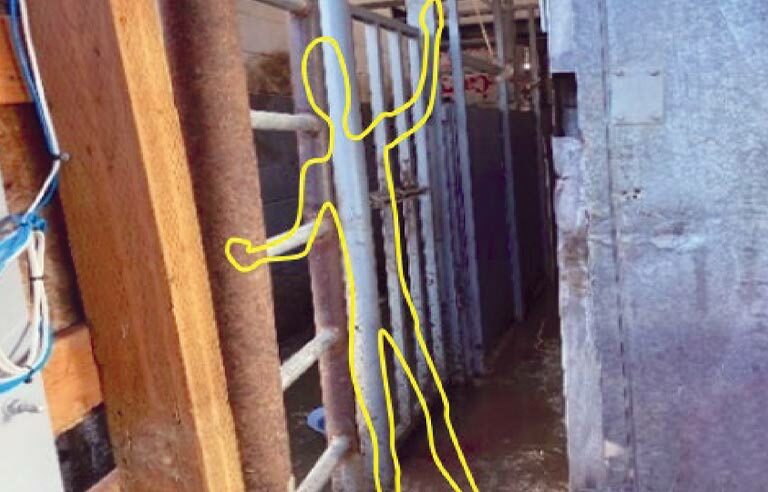
Photo: NIOSH
Case report: #71-262-2025
Issued by: Washington State Fatality Assessment and Control Evaluation Program
Date of report: Jan. 20, 2025
A 36-year-old worker was employed by a family-run beef slaughterhouse. He had extensive experience and was working as a kill floor manager. On the day of the incident, he was alone, using a handheld shock prod while operating a pneumatic metal sliding door to control the number of cattle entering a kill floor access chute. The door opened and closed by sliding through a small gap in a steel barrier that separated the chute from a walkway. A co-worker became concerned after she waited 10 minutes but no cattle entered the kill floor. She went to check and found the worker standing pinned and unconscious between the door and the barrier. She released the door pressure and he fell, unresponsive. She called 911 and alerted co-workers, who helped perform CPR until first responders arrived. The worker was airlifted to a hospital, where he died three days later from asphyxiation injuries. Investigators found that the worker likely used an outside activation switch 19 feet away to close the door and started to go inside as the door was closing. As he entered the doorway, he tried to prod a remaining cow but was crushed between the closing door and barrier. The door’s pneumatic operating pressure was 65-70 pound-force per square inch – enough to compress the worker’s chest and prevent him from breathing, yelling for help or pushing the door open to get free. The employer did not provide training on how to safely move cattle through the chute door.
To prevent similar occurrences, employers should:
- Use sliding doors with pneumatic or electric sensing edges that stop and reverse the doors when the leading edge contacts an obstruction. Inspect doors regularly to ensure proper functioning.
- Develop and enforce policies in written incident prevention programs that:
- Require the use of a buddy system.
- Require a formal job hazard analysis be done to identify hazards of corral systems, including pens, sorting alleys, chutes, gates and doors.
- Implement less hazardous work practices and conduct safety training.
McCraren Compliance offers many opportunities in safety training to help circumvent accidents. Please take a moment to visit our calendar of classes to see what we can do to help your safety measures from training to consulting.
Original article published by Safety+Health an NSC publication